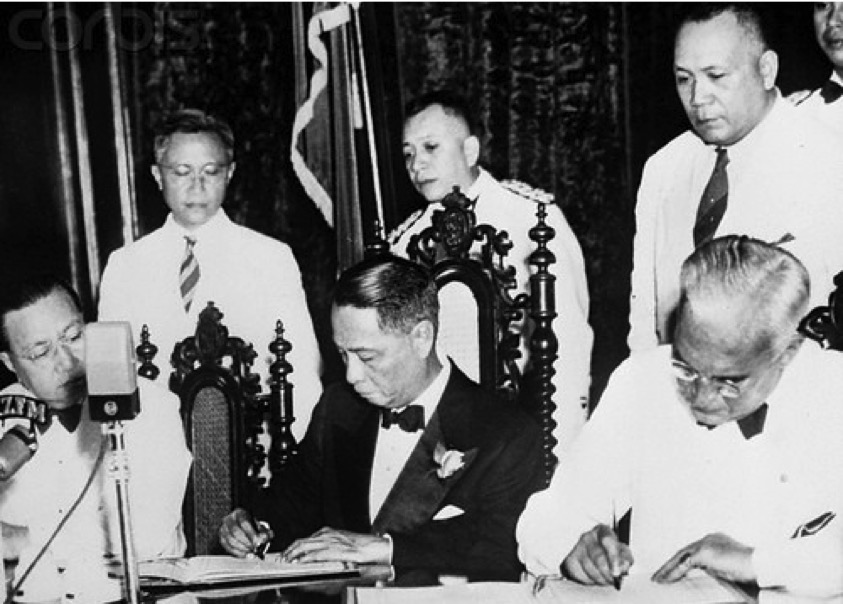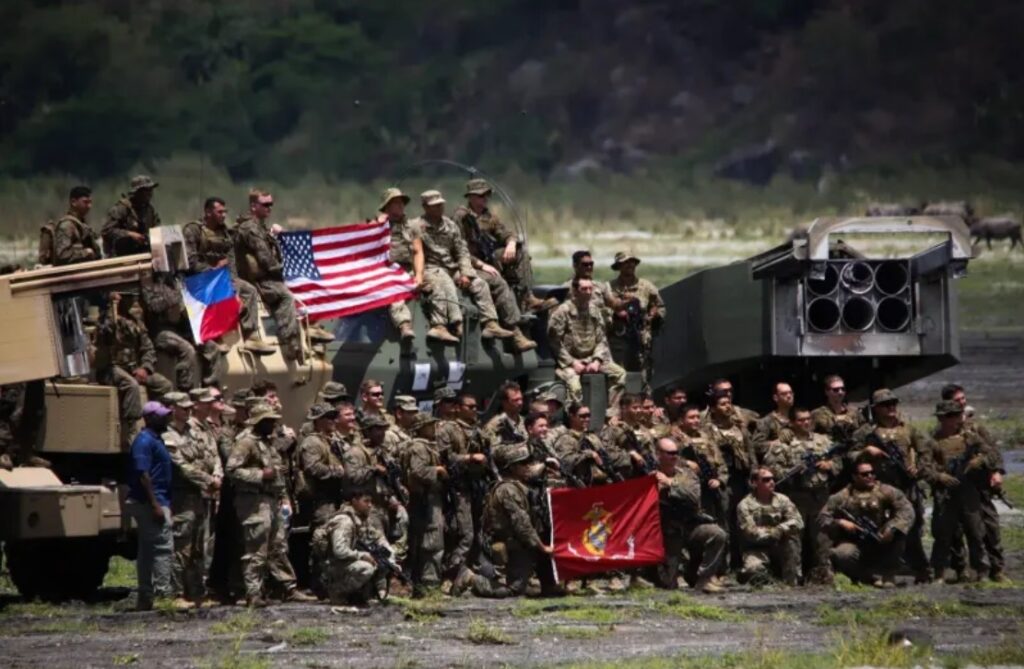On June 12, Philippine Independence Day is celebrated. It commemorates the declaration of independence by Philippine president Emilio Aguinaldo from Spain on the same date in 1898.
While June 12 is widely regarded as the country’s national day, it is important to note that a mere four years later – in 1902 – the Philippines would again lose its independence as it fell to another foreign power, the United States.
As it conceded defeat in the Philippines-American War of 1899 to 1902, the country would again be a colony of the United States for almost half a century – until 1946, with the signing of the Treaty of Manila. However, it remains to be seen if independence was achieved at all.

While the Treaty of Manila “relinquished U.S. sovereignty over the Philippines” and “recognized the independence of the Republic of the Philippines”, the United States would have hegemony over the Philippines for decades to come – even until this day.
Even after U.S. sovereignty over the Philippines was allegedly “relinquished”, the foreign power continued to run two large military bases in the country – Subic Bay Naval Base and Clark Air Base. These two installations became key to asserting American military dominance in Asia for most of the 20th century, providing vital refueling and resupply points for the U.S. Coalition during the Vietnam and Korean wars.
Hegemony over the country was not only beneficial logistically for the U.S. military, but it also meant Philippine military involvement in American military excursions elsewhere in the region. The Philippines was an active participant on the side of the U.S. during both the Vietnam and Korean wars, while also featuring in the Gulf War and the 2003 invasion of Iraq.
The Philippines’ fealty to Uncle Sam should not be surprising given the U.S. is its largest supplier of military hardware. The Southeast Asian nation is also the top recipient of U.S. foreign military and security aid in the region, and both nations participate in the annual Balikatan (English: “shoulder-to-shoulder”) military exercises, where their respective militaries jointly train in counterterrorism, amphibious, urban, and aviation operations.
While American military bases were officially shut down by the Philippine government in 1991, the U.S. retains their foothold in the country through the Enhanced Defense Cooperation Agreement (EDCA) which allows American military presences in the country. The door is also wide open for the American military to enter the country through the Visiting Forces Agreement (VFA) ratified by the Philippine Congress.

Putting aside America’s hold on the Philippine military, the imperialist power also have a tight grip on its colony’s economic order as well. As Filipinos thought they had obtained independence following the signing of the Treaty of Manila, they did not realize that their government had also signed two other economic agreements with the U.S. that effectively continued American economic control over their country.
The two most significant were the Bell Trade Act of 1946 and its subsequent Parity Amendment that modified the Philippine Constitution to suit U.S. economic interests. The former ensured that U.S. exports could enter the Philippine market without tariffs, while also giving preferential treatment to American exporters and businesses.
While the same Trade Act also provided tariff-free access for Philippine products in the U.S., it included a “quota system” that effectively limited the quantity of key commodities such as sugar and coconut products entering the American market. This made it difficult for Filipino exporters to gain a proper footing in the U.S., whereas American businesses could be very competitive in the Philippines.
As a condition of the Bell Trade Act, amendments were also made to the 1935 Philippine Constitution that granted U.S. citizens and corporations the same rights as Filipino citizens and businesses in exploiting natural resources and operating public utilities. This allowed American entities to control sectors such as mining, timber, and public utilities under the same terms as Filipinos.
What is noticeable is that those sectors all produce primary commodities, or raw materials integral to the production of higher-value commodities created by industry. This effectively meant that the Philippines was a key source of raw materials for American industries to flourish.
Minerals were extracted in the country to fuel the U.S. automobile industry that boomed in the post-war 20th century; deforestation paved the way for timber to be sourced to meet the demand for housing by a growing U.S. middle-class at the turn of the century. The Philippines was left poorer with a loosely-regulated mining sector, large-scale deforestation, and an emerging entrepreneurial class that struggled to compete against better-resourced American investors, while the U.S. found its supplier to fuel its subsequent economic boom.

Above all, American economic hegemony over the Philippines meant that the latter could not build its own industries – effectively relegating it to the status of a “primary product exporter” rather than a manufacturer. In effect, the Philippines’ economic trajectory did not follow suit to that of South Korea or Taiwan which heavily relied on manufacturing to fuel their respective economies.
Another significant flow-on effect of this economic reality is that the Philippines does not generate as much jobs as the aforementioned countries do. Combined with a burgeoning population, this has led to the country becoming a major exporter for another major primary product – labor and manpower.
More than ten million Filipinos live and work overseas, pushed by the lack of well-paying jobs in the country. This has the corresponding effect of providing cheap labor to the developed world, including the United States.
Our economic reliance on the U.S. means the Philippines could never develop its own industries and achieve self-reliance. Because of our military dependence to the United States, American foreign imperialist ambitions has become tied to Philippine foreign policy interests.
In light of those realities, it is highly questionable if the Philippines is independent at all. An independent country has full control over its internal and external affairs, and this is certainly not the case with the Philippines.
Instead, a better classification for the Philippines would be neocolonial state; in that, although it has recognized independence and sovereignty over its claimed territory, it continues to be heavily influenced by foreign powers. It does not have full control over its destiny, and is chronically reliant on the actions of the hegemonic powers over it.
On the 126th anniversary of Emilio Aguinaldo’s declaration of independence from Spain, may we reflect on the true material conditions of our country, what our true foreign policy interests are, and use that to strive for genuine independence for the Philippines.

